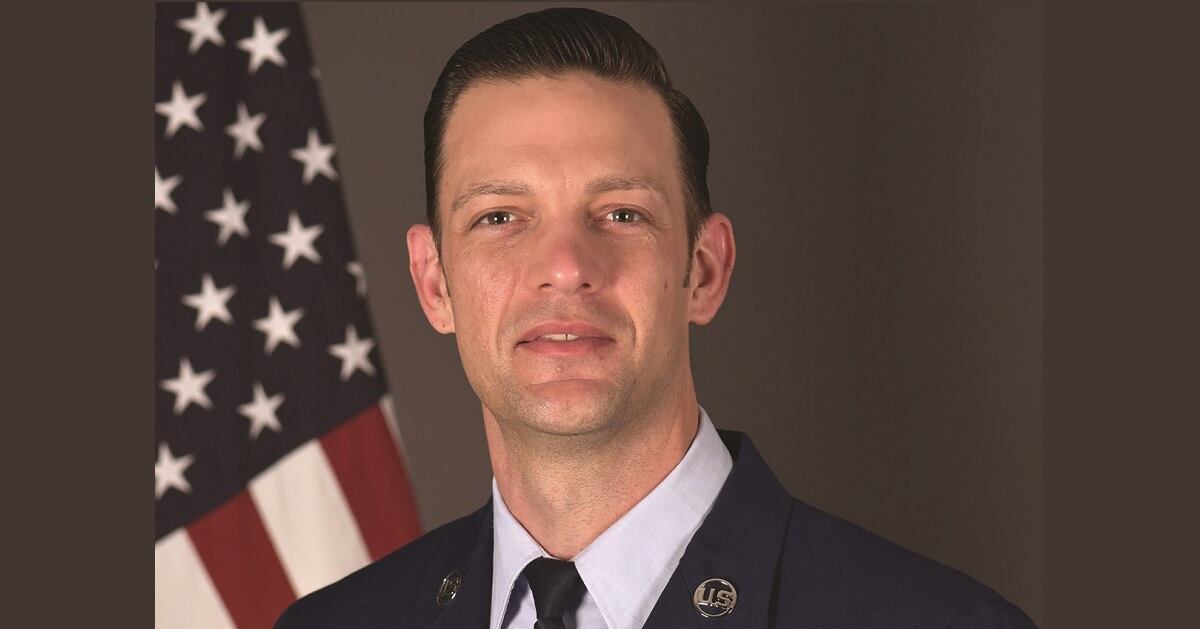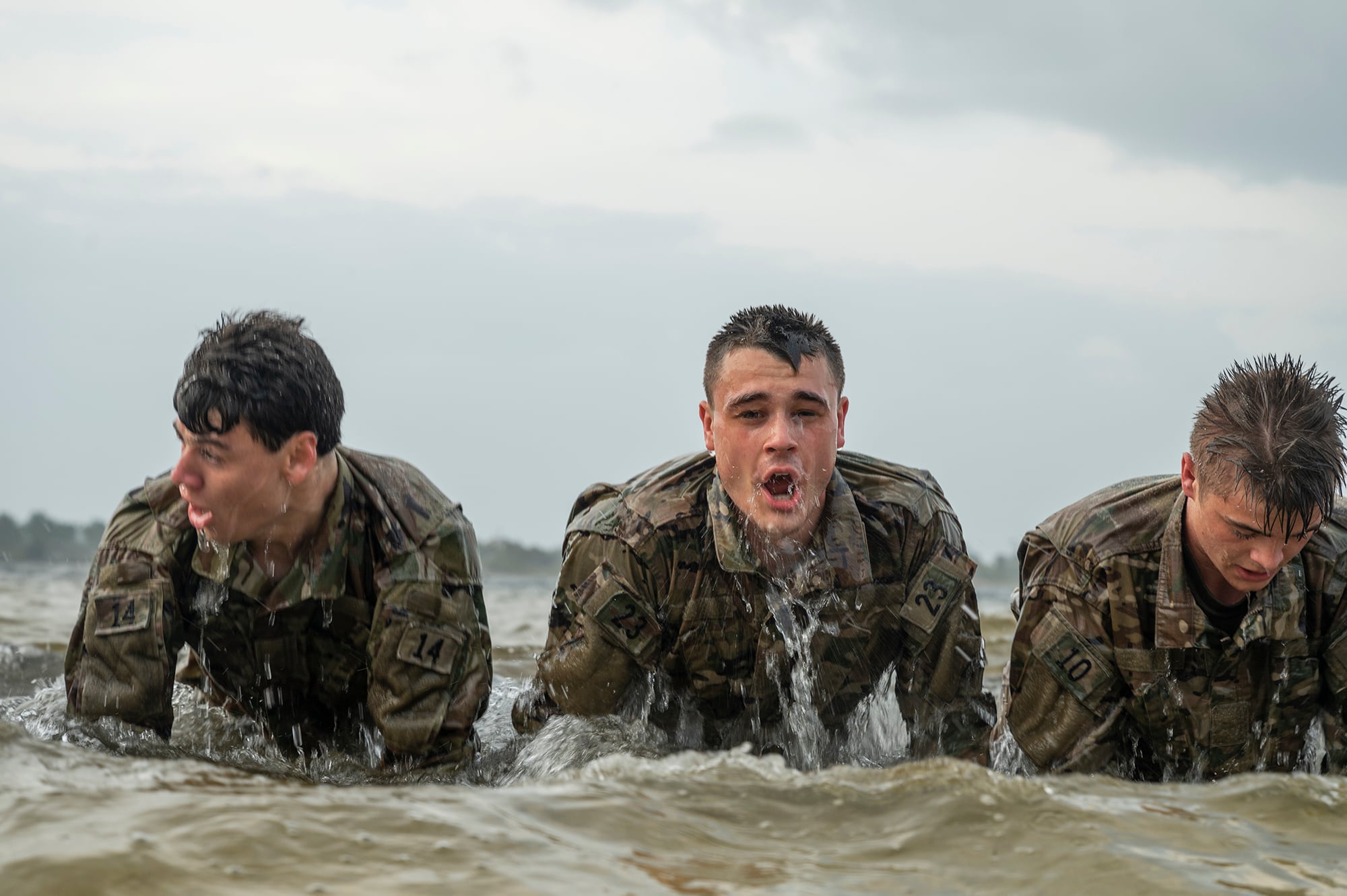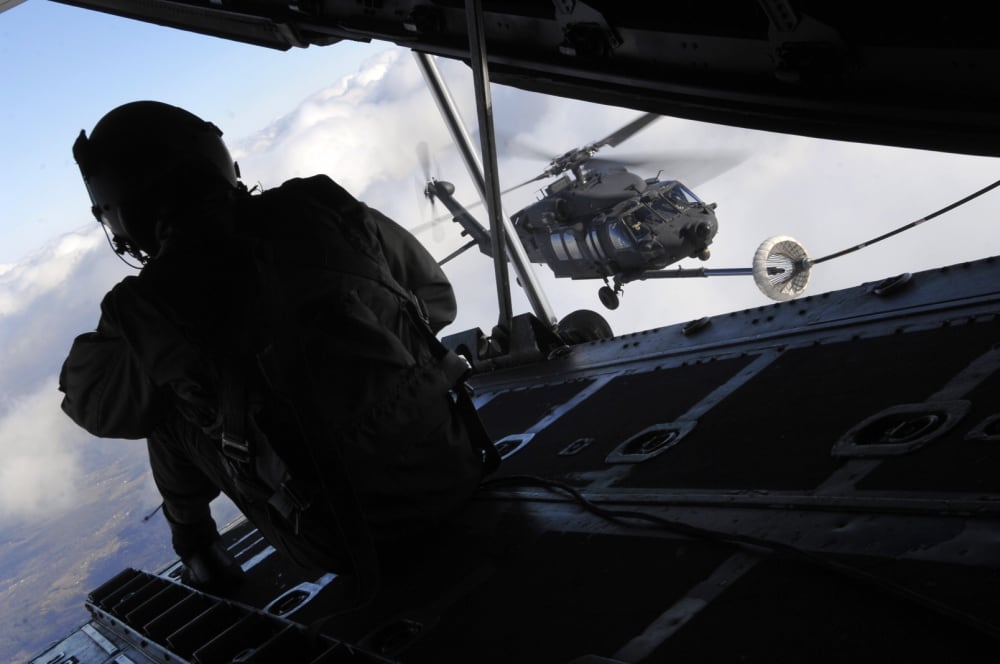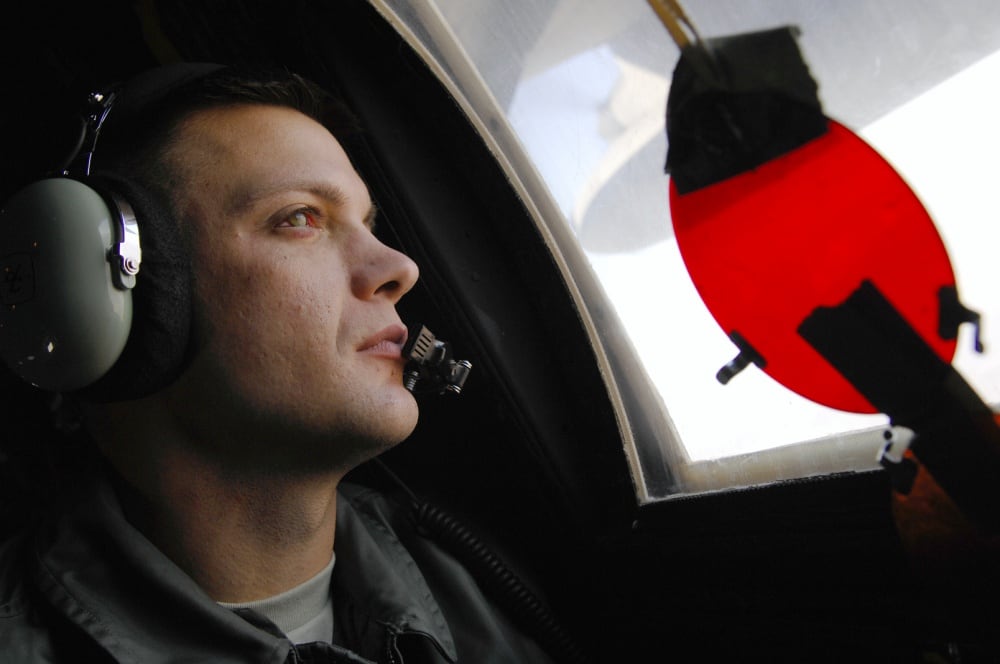Repurposing a chemical and biological contamination tent to protect troops from the coronavirus earned Senior Master Sgt. Jeremy Mayo Military Times’ 2021 Airman of the Year award.
Mayo, the 352nd Special Operations Support Squadron’s operations superintendent at RAF Mildenhall in England, has served in the Air Force for nearly two decades. But 2020 put his years of experience and leadership to the test with missions that don’t stop for a pandemic.
The Arkansas native enlisted in the Air Force in 2002. Though he admired the travel and deployments of the loadmasters he knew, he appeared headed for a career in munitions instead.
Then, as luck would have it, he found a way into the air mobility field through a connection on his brother’s baseball team.
“One of the kids on there, his dad was the guy who divvied up the jobs at [the Military Entrance Processing Station],” Mayo said.
A loadmaster job became available, and the man approached Mayo’s father: “He’s like, ‘Hey, does your son want it? He leaves in two weeks,” Mayo recalled. Mayo’s first flight was his trip to basic military training.
He started out working for Air Mobility Command but wanted something more from his Air Force career. Special operations appealed to him for its life on the road, unpredictability and opportunities to work with elite groups from across the military.
So far, he’s flown missions including refueling, resupply and infiltration and exfiltration on the MC-130H Combat Talon II, MC-130J Commando II and the now-retired MC-130P Combat Shadow.
His current squadron “provides direct support to unified and theater commands in response to U.S. Special Operations Command Europe tasks by orchestrating current operations, planning, weapons and tactics, aircrew training, weather, mobility, intelligence, operational medicine and other abilities throughout Europe and Africa,” according to the Defense Department.
This is his second assignment at Mildenhall, serving first from November 2010 to November 2014 and then returning in August 2018. He’s also been stationed at his hometown installation of Little Rock Air Force Base, Arkansas; Hurlburt Field and Eglin AFB, Florida; and as an instructor at Kirtland AFB, New Mexico.

He was finishing a senior leadership course for career enlisted aviators in Texas in March 2020 while COVID-19 swept through Europe. As the virus gained a foothold in the United States, the course was cut short, and Mayo headed home to a squadron that looked drastically different than the one he left.
Airmen were split into different shifts that wouldn’t overlap to avoid spreading the virus throughout the squadron. Mayo was one of a few mission-essential workers who came into the empty office each day.
“We were pretty tight — did a lot of things together, people always interacted,” he said of the 67th Special Operations Squadron, his unit at the time. “To see people go their own ways and try and stay in touch as much as possible, it was just a very odd time.”
Mayo said Col. Clay Freeman, the former 352nd Special Operations Wing commander, mentioned that the Air Force may already have a weapon against COVID-19: the chemical aircrew survivability barrier, a tent-like, air-filtering structure for C-130 airframes.
Testing showed the contraption could let airmen transport an ill passenger away from the battlefield without endangering the crew’s health. Mayo recognized its pandemic-era value and helped come up with the plans for how airmen would use the system.
“Individuals who get contaminated, we can isolate them,” he said. “Then the [medical] team … can take care of them, and we can get them back.”
RELATED

The equipment also makes special operations crews more self-reliant and flexible instead of needing to call on Air Mobility Command or U.S. Air Forces in Europe to handle dangerous medical evacuations.
It has yet to see primetime, though. Mayo said there was one instance where they were alerted to pick up someone with COVID-19 symptoms and bring them to a health care facility, but the tasking fell through.
Still, the barrier remains available for future missions. The Air Force has spread the techniques and procedures for using the device to all MC-130J aircraft and for units covering three regions across the world, Mayo said.
Limiting exposure for airlifter troops is “the way forward,” though not foolproof, Maj. Shana Hirchert, chief flight physician in the 353rd Special Operations Group at Kadena Air Base, Japan, said in an April 2020 video.
“With us flying different levels of oxygen … the patients are at risk to basically go hypoxic,” she said. “That would be really hard for us to monitor from outside of the tent. We do want to have at least one medical person in there.”
Despite the pandemic, Mayo had an eventful year. He deployed to three different regions of the world in 2020, the Air Force said, and served as the senior enlisted leader for an exercise that trained French special operations helicopters on refueling and seizure skills to prepare for combat in Africa.
“On the same trip, we flew French/German KC-130J aircrew members for a [tactics, techniques and procedures] exchange and observation,” Mayo said. “We were the first NATO partner to fly these individuals since receiving their newest refueling-capable aircraft.”
He declined to provide further details about his deployments.
Pandemic-era restrictions set by each country also changed how many airmen could enter during combat missions. That stopped the Air Force from sending in as much support for operations as it might have wanted.
To help avoid burnout, Mayo said the smaller pool of airmen worked longer shifts over fewer days than usual. But he noted that splitting into daytime and nighttime crews, aligning schedules and trusting airmen to handle tasks like paperwork from home can be useful even after the pandemic subsides.
“We all used to do them at once, at the same time in the afternoon, and everybody got bunched up. Some of the crews were on top of each other, people trying to find planning rooms,” he said. “So that’s definitely worked out.”

Airmen began returning to the squadron as they were vaccinated in the spring, and are again fully staffed in person.
Mayo, known as a mentor in the special ops community, is happy to ditch “First Friday” gatherings via Zoom and return to face-to-face interaction in the workplace.
“I think certain individuals built stronger relationships out of it,” he said of getting through the pandemic. “But I think a lot of us had to start over with each other because we hadn’t really engaged in so long.”
It’s caused him to rethink his own work-life balance, too. He heads home by 5:30 p.m. each day to see his wife, 11-year-old son and 6-year-old daughter instead of staying late at the office.
“They don’t need to suffer because I feel like I have to get one more thing done. It’ll be there tomorrow,” Mayo said.
Outside of the squadron, he spends time coaching his son’s baseball team and practicing CrossFit.
Mayo will leave Mildenhall in August 2022, and hopes to land a job at a combatant command or in a joint assignment representing the Air Force. He’s found fulfillment in being dependable and reliable for his fellow airmen.
“You don’t have to be this amazing superstar, but when your name comes up, there’s no doubt you can do your job,” he said.

Rachel Cohen is the editor of Air Force Times. She joined the publication as its senior reporter in March 2021. Her work has appeared in the Washington Post, the Frederick News-Post (Md.), Air and Space Forces Magazine, Inside Defense, Inside Health Policy and elsewhere.